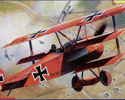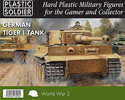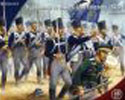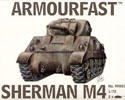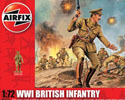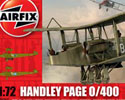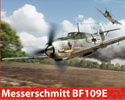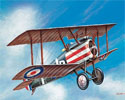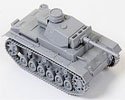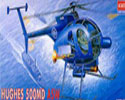The First World War - Weaponry
Weaponry
Rifles
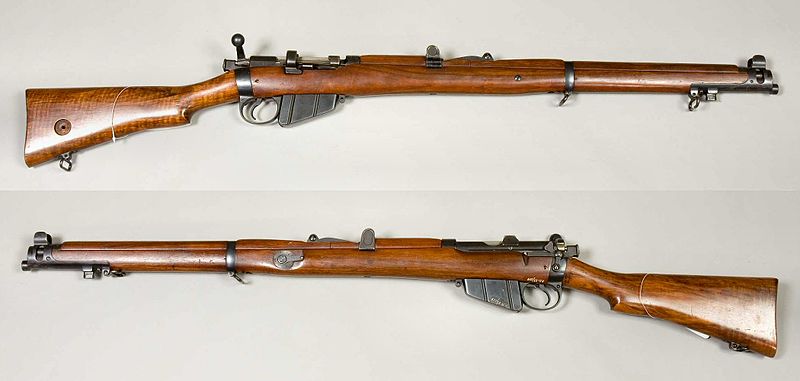
The BEF was equipped with the SMLE
Under normal circumstances the rifle was the infantry man's most effective weapon. It was easy to carry around and a reasonable amount of ammunition could be carried about the person. A rifle had a range of perhaps in excess of a mile but was most effective at shorter ranges of a few hundred yards or so. Rifles could also be used at short range in the trenches during an assault. Developments before the war had provided the magazine fed rifle by which a number of rounds could be fired in quick succession. In 1914 the infantry of the B.E.F. were trained to shoot around 15 rounds a minute of accurate aimed fire, an exceptional rate not achieved by any of the other armies, one British instructor even set a record 37 in a minute.
Grenades
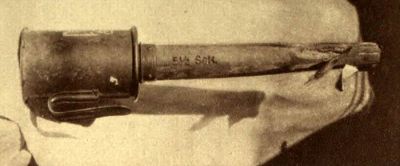
A German Stick grenade
Grenades developed from the need for close support during a siege or assault. There were many different versions of grenades but they were basically variations of either the fused or percussion type. Percussion types were not favored by the infantry of any side during World War One as they were prone to going off due to any form of contact with an obstruction, a significant possibility in the confined spaces of the trenches. The favorite British grenade was the Mills bomb, that used a casing made from rectangular segments that fragmented when it exploded, sending a shower of shrapnel in all directions. The Germans used stick grenades a lot, the explosive part of the grenade being mounted at the end of a stick with a fuse that was lit when the explosive part left the stick.
Bayonets
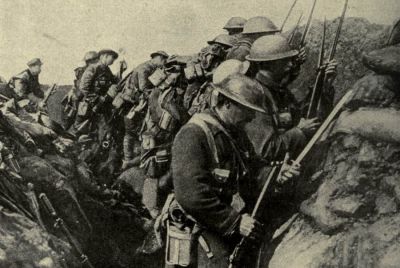
Fixing bayonets
The bayonet was an innovation that turned a musket into a pike for the purposes of close combat. Over the centuries the concept was adapted to allow the rifle to be similarly equipped. To be faced with a charging line of infantry brandishing bayonets was a daunting prospect most people would not want to face. By the time of World War One, and the predominance of machine guns and artillery, the opportunity to use the bayonet was much reduced; nevertheless, every nation continued to provide its infantry with them.
Pistols
Pistols were historically assigned to officers and men in positions that would find carrying a rifle a hindrance when executing their normal duties; a motorcyclist or driver for example. The development of trench warfare created a demand for a small firearm that could be used during close quarter combat in confined conditions. A raiding party needed a weapon that could be aimed and fired at a target that presented itself very quickly and fleetingly, a rifle was just too cumbersome.
Machine Guns
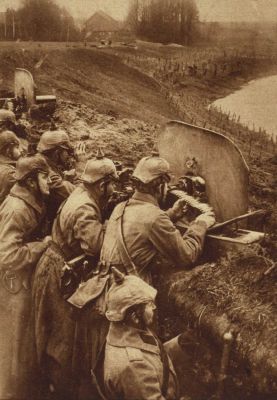
An entrenched German Machine Gun
If the infantry was Queen of the battlefield then the machine gun was the Ace. In a defensive role the machine gun could dominate areas of the battlefield and suppress any attacking forces, pinning them down, giving the artillery the opportunity to lay down a bombardment to kill off any offensive action. Attacking infantry had to walk through a hail of bullets at waist height from multiple directions that could literally cut them in half as they trudged forward through the mud. The German Army started the war with fewer machine guns than the Entente powers but they soon learnt that they had a decisive part to play in a defensive war and readily adopted them in numbers. As the war progressed lighter versions entered service that could be carried into an attack and specialized tactical groups developed around these weapons, especially by the German Army.
Flame Throwers
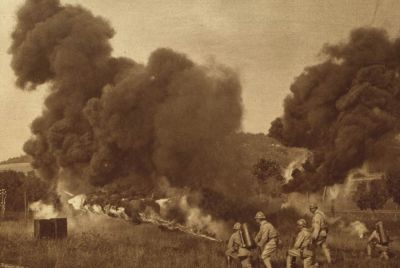
French troops using flamethrowers
Before World War One the German Army had conducted tests using two types of flamethrower (Flammenwerfer), a light and heavy model, and had established three specialized battalions to use them. The light flamethrower (Kleinflammenwerfer) was operated by one man and had a range of around 18m. The heavy flamethrower (Grossflammenwerfer) was operated by two men and had a range of around 36m. The Germans first used flamethrowers against the French during the end of 1914. On July 30 1915 the Germans deployed flamethrowers against the British at Hooge with great success, the British being taken by surprise and forced to give ground with high casualties. Once the initial surprise had worn off however the Germans didn't gain as much from the use of flamethrowers; the allies having developed a response to them by identifying the operator and pouring fire at them in an effort to either kill the operator or blow the storage tank up. Flamethrowers were most useful at short range for clearing out trenches. The British and French subsequently developed their own flame throwing devices.
Hand to Hand
With large scale attacks limited due to the nature of trench warfare, the practice of raiding became a more routine method of fighting. Raiding parties would cross no man's land quietly during nighttime in order to keep the enemy under stress, to obtain prisoners for interrogation, to destroy machine gun nests or listening posts, to reconnoiter the enemy trenches prior to a big attack and not least of all to keep the troops occupied and busy. The men were armed with a variety of weapons suitable for close quarter combat including pistols, knives, knuckle dusters, clubs, hand grenades, hatches, pick axe and spade handles, entrenching tools and many more items that could be used effectively in an old fashioned face to face fight.
Armoured Vehicles
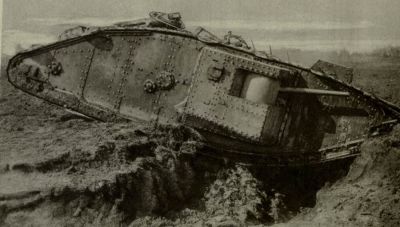
A British Tank crosses a trench
World War One saw the birth of the mechanised armoured vehicle. Called a 'tank' to disguise it's true nature the first armoured fighting vehicles first entererd service during September 1916 being used by the Allies as a possible cure for static trench warfare. These early metal monsters were underpowered, hard to steer, slow, unreliable and susceptible to artillery fire. They, nevertheless, made an impression when used on the Western Front and on occasions, when they didn't break down or get stuck, proved to be some real benefit to the attacking forces. Caterpillar tracks spread the weight of the tank over a larger area, reducing the ground pressure. They also enabled the tanks to cross obstacles and trenches. The Germans did not share the same enthusiasm for the new weapon and instead concentrated on developing anti-tank weapons; more powerful grenades, the armour piercing K-Bullet and anti-tank rifles. Despite this they did produce one tank, the A7V, of which only 20 were produced, the rest of the German tank force being captured Allied vehicles. In time the Germans developed tactics and weaponry to deal with the new weapon. The tank gave the means by which a gap could be opened in the enemy line, but there was still no technology available to exploit it and make the breakthrough.
Mortars and Artillery
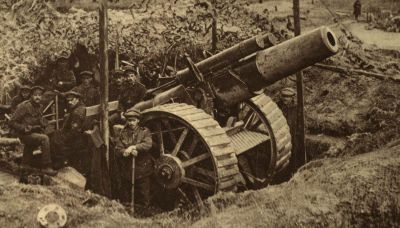
Howitzers played an important part in trench warfare
With the infantry locked into two opposing lines, separated by 'No Man's Land' crossed by barbed wire and covered by machine guns, and no way of easily getting at each other, mortars and artillery became the only practical way of projecting destructive power onto the enemy. Trench mortars could be used up front by the infantry in the trenches to direct fire on their immediate opposition. The old style field artillery, that was used to fire on advancing infantry over open sights, became displaced in favor of howitzers, capable of lobbing shells high into the air to come down on either the front line trenches or support lines many miles to their rear. Observers in balloons and aircraft used radio to direct the artillery fire that could be both deadly and accurate.
Poison Gas
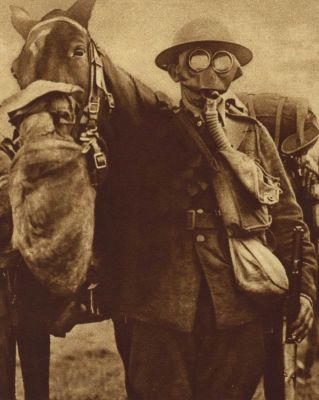
Gas masks were developed by the end of World War One, even some designed to protect animals
Of all the weapons that were innovations in World War One there can be no doubt that poison gas attracts the most disgust and caused the most fear. Gas was used by both sides during the war and caused horrendous wounds and painful suffering. The first types of gas to be used were a form of tear gas at the end of 1914. The first use of poison gas was at Ypres on April 22 when the Germans used chlorine gas against French troops. The gas caused widespread panic and left a 4 mile gap in the French line, but the Germans were unprepared for the success and could not exploit it. The British retaliated at Loos during September 1915 but the wind conditions were not ideal and some British troops were exposed to their own gas. Other types of gas used were Phosgene and Mustard gas. Mustard gas was particularly nasty as it caused blisters, internally as well as externally, several hours after exposure to it. As the war progressed protection against gas became more sophisticated. early forms of protection included handkerchiefs soaked in urine that were placed over the face, later in the war specialized masks were developed to allow troops to continue with their duties without being subjected to the effects of gas attacks.
(Photos - Photos of the Great War Website)
